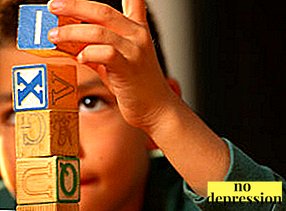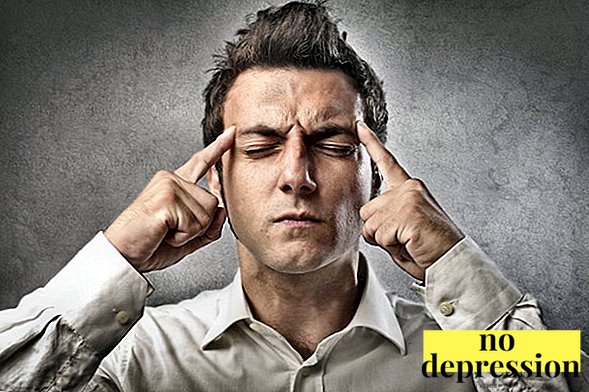All life achievements and failures of a person are the result of his activities.
Targeted behavior formed by consciousness.
Conscious regulation of behavior

Man is capable consciously manage your behavior, activities.
Similar abilities are explained the presence of will, which is one of the components of the structure of consciousness.
This is the ability to overcome internal, external difficulties in achieving certain goals. Every person in the course of his life faces many challenges and barriers.
TO external can be attributed targeted actions of other people, social stereotypes, adverse social conditions, etc. Internal barriers are expressed in negative attitudes, fears, doubts of the individual.
Behavior regulation manifested at different levels. The simplest techniques are elementary phenomena - blinking, swallowing, sneezing, etc.
At a more complex level, targeted actions are performed, consisting of intermediate stages in the form of simpler actions.
For example, to pass an exam, you have to force yourself to get up several days in a row early in the morning, look for the necessary information, teach it, etc. To achieve this goal the whole complex of actions is required.

The basis of the conscious control of their behavior is not only the will, but also thinking.
A large number of actions can be accomplished by volitional impact on their behavior, but without applying the thought process.
That is, a person is aware of what he is doing, but cannot clearly define the purpose of his activity.
In this case, will, emotions, but no thinking appear.
Similar behavior is often observed in stressful situations when in a state of affect in an individual, the degree of control over his behavior is greatly reduced.
If volitional efforts are aimed at achieving meaningful goals in which a person is interested, then we can talk about the conscious regulation of behavior.
The manifestation of thinking is not only in defining the goal, but also in choosing the ways, ways to achieve it. At the same time, emotional coloring is also present.
People never seek to achieve something that does not cause them a certain emotional response. Indifferent person object or phenomenon never become his desired goal.
Structure of conscious activity

Conscious activity includes a number of the following components, without which it could not exist:
- Cognition. A person is distinguished by the ability to learn about the world, to the constant development of new skills. It is thanks to the cognitive activity that the conscious existence of man in the world becomes possible. The ability to cognitive activity is manifested from the first days of the birth of the child. He perceives facial expressions and emotional reactions of parents, gradually learn how to interact with people around him, acquires skills. As the individual socializes, there is a constant assimilation of information in the family, in educational institutions, at work, in numerous social groups.
The process of knowledge does not stop for a minute and continues until the very end of life.
- Attention. The ability to concentrate on the object or phenomenon of interest allows an individual to obtain the necessary information, to fix it. The level of attention depends on individual natural abilities, self-discipline, age, emotional state, and the influence of external factors. Attention can be based on sensory (sensory) sensations, on intellectual efforts.
 By way of occurrence, it can be both involuntary (passive) and arbitrary (active). It is voluntary attention that plays the main role in purposeful activity. It is the product of a volitional effort - a conscious desire to concentrate on the desired object or phenomenon to obtain the necessary information.
By way of occurrence, it can be both involuntary (passive) and arbitrary (active). It is voluntary attention that plays the main role in purposeful activity. It is the product of a volitional effort - a conscious desire to concentrate on the desired object or phenomenon to obtain the necessary information. - Memory. The information taken into account is assimilated by us and is applied further by purpose due to memory. Moreover, the process of memorization can be both targeted and arbitrary. Some information the individual specifically seek to remember, and some information is stored in memory on their own and can be stored in it for life. Usually the most memorable are the bright, meaningful events.
- Emotions. Consciousness is inseparable from emotional states and experiences. Anyone can change their behavior under the influence of joy, sadness, anger, horror, despair, etc.
The degree of influence of the emotional state on the conscious activity directly depends on the individual's will and intellectual abilities.
People with a strong will and a high level of intelligence are more able to control their emotions even in critical situations.
- Will. Meaningful striving for a goal that allows you to achieve your goals and get the desired results. Certain volitional abilities are given to a person by birth veil, but if desired, they can be developed and improved. Manifestations of will are courage, determination, self-discipline, self-confidence, courage. Under the mature strong-willed personality is understood a person who possesses these abilities at the same time with a high level of intelligence. Otherwise, a strong will can lead to the development of meaningless stubbornness, the desire to manipulate and control other people.
- Self-awareness. The most important component that is the basis of the whole structure. This is a person’s awareness of his body, his feelings and emotions, attitudes and principles, his attitude to reality.
Understanding your inner world is key to building all conscious human activity.
With a high level of development of self-awareness, an individual demonstrates full compliance of internal attitudes with environmental conditions, ability to work on himself and self-improve, effectively integrate into any social groups, clearly realize his “I” and protect him from negative external influence.

Examples

An example of conscious activity is any purposeful behavior.based on emotional interest in achieving goals and applying will.
For example:
- entering the university for a diploma in the desired specialty.
- systematic trips to the gym to improve their physical fitness;
- visiting job interviews for the purpose of finding a desired job;
- diet to reduce weight to the desired performance;
- completion of advanced training courses for career advancement;
- grooming a girl with the purpose of entering into a relationship with her, etc.
Who first formulated the principle of unity?
S.L. Rubinstein was the first scientist to formulate this principle.
He came to the conclusion that activity and consciousness are not versatile aspects. On the contrary, they form a whole.
The formulated principle immediately acquired significant methodological significance, since the opportunity arose empirically through the activities of people to study the patterns of the functioning of their consciousness.

Activity from this point of view is considered as the result of certain mental processes characteristic of individuals.
Prior to the formulation of this principle of unity, two important aspects existed clear separation.
Activity was considered exclusively external manifestation, and consciousness - an internal mental phenomenon.
In fact, the psyche has not only internal manifestations, but also certain external aspects, and the activity not characterized only by the outside.
What is the point?
Activity is considered not only as a manifestation of human reaction to various external stimuli. She is in many ways formed under the influence of the existing attitudes, rules, criteria for evaluating reality, etc.
If the activity existed separately from consciousness, then all members of society would demonstrate the same type of reaction to various events. The behavior of people in certain similar conditions would be completely identical.
But everything happens differently. The same external stimuli cause their own reaction to different members of society.

This is because on a conscious level each perceives external signals in their own way and further builds behavior in accordance with its principles, attitudes, accumulated experience and knowledge.
For example, the entire class is given a task for the holidays - read a list of literary works.
Some children will read everything that is required, others will do the task selectively, and still others will completely ignore the teacher’s demand.
External installation on the implementation of activities everyone was the same, but each student perceived this installation at his conscious level.
Consciousness is not just the product of the individual development of the individual.
Most of the human thought processes are formed under the influence of information that he receives in the course of his activities.
Being in the family, learning the norms of upbringing, getting an education, being engaged in professional activity, we all get experience which becomes the basis for the formation of consciousness.
Without a full-fledged social activity, a person would not be able to achieve even the most minimal level of development of consciousness.

If an individual from birth is placed in a wild environment with the complete absence of the possibility of obtaining the necessary skills of social behavior, mindfulness of thinking he will be completely absent.
Only reflex, instinctive actions will be observed.
Thus, consciousness and activity have an inextricable link and form a whole.
Conscious regulation of behavior is the result of the functioning of a whole complex of components of the human psyche.
Activity structure:

 By way of occurrence, it can be both involuntary (passive) and arbitrary (active). It is voluntary attention that plays the main role in purposeful activity. It is the product of a volitional effort - a conscious desire to concentrate on the desired object or phenomenon to obtain the necessary information.
By way of occurrence, it can be both involuntary (passive) and arbitrary (active). It is voluntary attention that plays the main role in purposeful activity. It is the product of a volitional effort - a conscious desire to concentrate on the desired object or phenomenon to obtain the necessary information.

